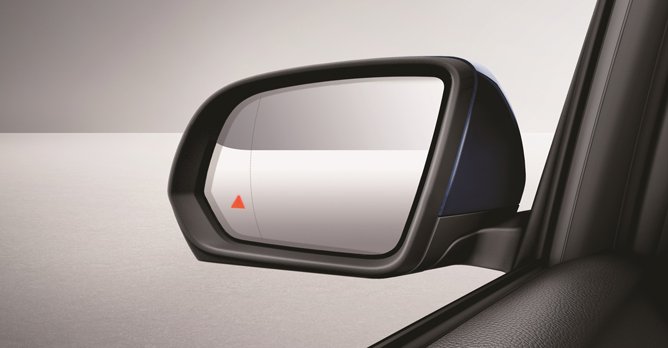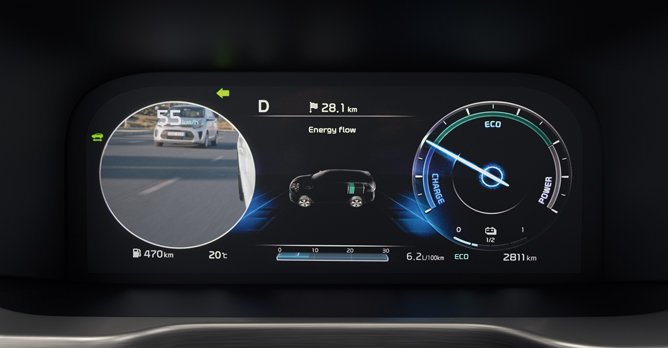Worried about blind spots? Here's how to adjust your mirrors properly
26 May 2023|6,839 views
If you've experienced near-misses, and after every incident swore that 'there was no car a moment ago' or exclaimed 'where did he come from?', then you have an issue with blind spots.
Blind spots, as they are called, are areas around your car that can't be seen when you're looking ahead or through any of the mirrors. Failing to spot other road users 'hidden' in your blind spot can cause an accident and/or fatalities.
Common blind spots include the rear sides of the vehicle, the front and back of the vehicle (if the object is too low), and the left and right areas (in cases where side vision is hindered). A driver may be unable to see vehicles in the adjacent lanes of the road by using only the car's mirrors. Here's how to widen your field of vision by correctly adjusting your mirrors.
1. Move your driver's wing mirror outwards
Press your head against the driver's side window, and adjust the mirror outwards until you can just see the edge of the car.
2. Now, move the passenger's side view mirror outwards.
Without moving your head, adjust the passenger's side mirror so that you can just see the edge of the car. You do not want this mirror to duplicate the representation on your rear view mirror. Instead, you want to see the lane beside you.
3. Ensure you cannot see the sides of your car with both wing mirrors.
Both side mirrors should now give a clear view of the lanes beside you, not the sides of the car.
4. Check that your mirrors do not duplicate each other.
Both wing mirrors and your rear view mirror should each give you a unique view of what is behind you. If any of them duplicate the view of the other, you may have to check and repeat steps 1 to 3.
5. Ask a friend to walk around the back of the car.
This will help you ensure that there is no direction in which your friend can approach the car and blindside you. Adjust your mirrors so that you can see your friend at all angles.

Likewise, there should be continuity as your friend travels from the rear view mirror to the driver's side mirror. You should be able to see your friend, from your wing mirrors to your peripheral vision, as he travels from the back of your car to the front.
If you can keep sight of your friend as he circles your car, while keeping your head fixed in front, you have adjusted your mirrors correctly.
Should you still turn your head?
Yes. Even if you've adjusted your mirrors correctly, and even if your car has a blind spot monitor, sometimes, a quick glance is still the best way to check.
However, remember that when you turn your head and keep glancing in a particular direction, there's a chance you'll subconsiously steer the car towards that direction as well. So, train yourself to keep the steering wheel pointed straight, even when you turn your head.
*This article was first uploaded on 1 September 2007
Looking for more driving advice? These stories may interest you
Watch out for these hazardous road surfaces!
Never commit these acts of road rage, no matter how angry you are
Five sure-fire ways to improve your defensive driving skills
Five exercises that will make you a better driver
Six car features you probably didn't learn about in driving school
Newbie drivers take note - here are key road rules to remember
Are you a new driver taking to the road? Read our helpful hints first!
Even the best safety systems can't save you from these bad habits
If you've experienced near-misses, and after every incident swore that 'there was no car a moment ago' or exclaimed 'where did he come from?', then you have an issue with blind spots.
Blind spots, as they are called, are areas around your car that can't be seen when you're looking ahead or through any of the mirrors. Failing to spot other road users 'hidden' in your blind spot can cause an accident and/or fatalities.
Common blind spots include the rear sides of the vehicle, the front and back of the vehicle (if the object is too low), and the left and right areas (in cases where side vision is hindered). A driver may be unable to see vehicles in the adjacent lanes of the road by using only the car's mirrors. Here's how to widen your field of vision by correctly adjusting your mirrors.
1. Move your driver's wing mirror outwards
Press your head against the driver's side window, and adjust the mirror outwards until you can just see the edge of the car.
2. Now, move the passenger's side view mirror outwards.
Without moving your head, adjust the passenger's side mirror so that you can just see the edge of the car. You do not want this mirror to duplicate the representation on your rear view mirror. Instead, you want to see the lane beside you.
3. Ensure you cannot see the sides of your car with both wing mirrors.
Both side mirrors should now give a clear view of the lanes beside you, not the sides of the car.
4. Check that your mirrors do not duplicate each other.
Both wing mirrors and your rear view mirror should each give you a unique view of what is behind you. If any of them duplicate the view of the other, you may have to check and repeat steps 1 to 3.
5. Ask a friend to walk around the back of the car.
This will help you ensure that there is no direction in which your friend can approach the car and blindside you. Adjust your mirrors so that you can see your friend at all angles.

Likewise, there should be continuity as your friend travels from the rear view mirror to the driver's side mirror. You should be able to see your friend, from your wing mirrors to your peripheral vision, as he travels from the back of your car to the front.
If you can keep sight of your friend as he circles your car, while keeping your head fixed in front, you have adjusted your mirrors correctly.
Should you still turn your head?
Yes. Even if you've adjusted your mirrors correctly, and even if your car has a blind spot monitor, sometimes, a quick glance is still the best way to check.
However, remember that when you turn your head and keep glancing in a particular direction, there's a chance you'll subconsiously steer the car towards that direction as well. So, train yourself to keep the steering wheel pointed straight, even when you turn your head.
*This article was first uploaded on 1 September 2007
Looking for more driving advice? These stories may interest you
Watch out for these hazardous road surfaces!
Never commit these acts of road rage, no matter how angry you are
Five sure-fire ways to improve your defensive driving skills
Five exercises that will make you a better driver
Six car features you probably didn't learn about in driving school
Newbie drivers take note - here are key road rules to remember
Are you a new driver taking to the road? Read our helpful hints first!
Even the best safety systems can't save you from these bad habits
















